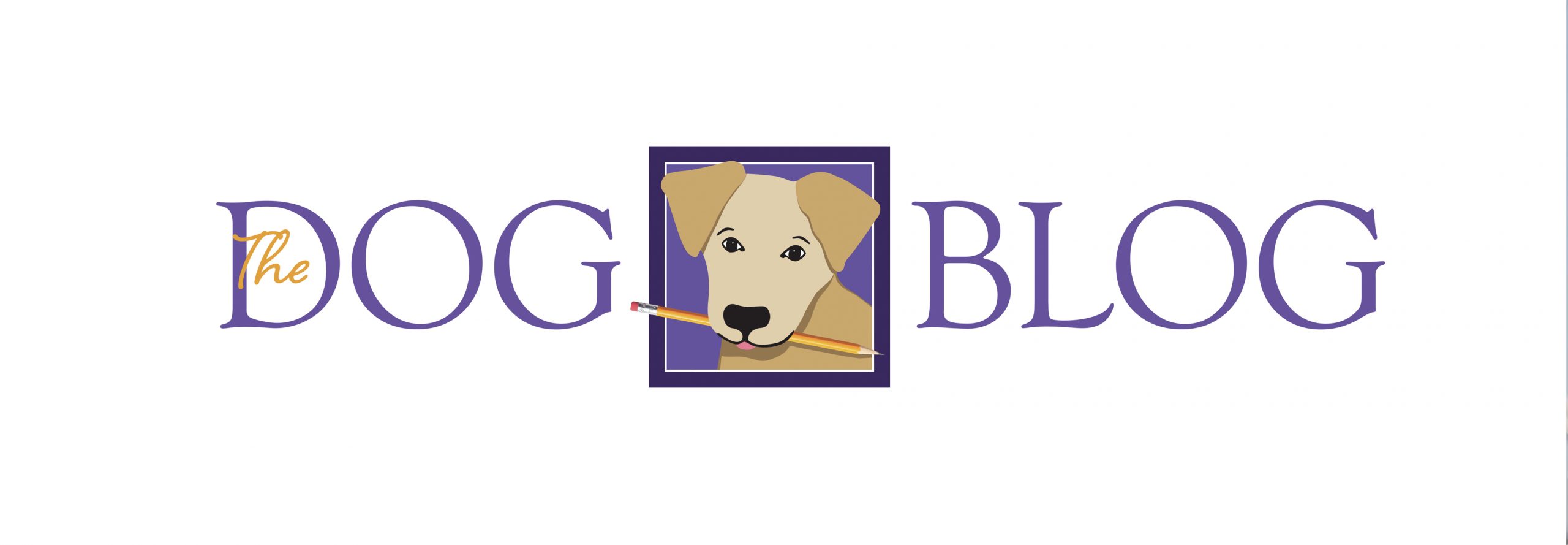
Puppy School: 13 Cues Our Puppies Learn
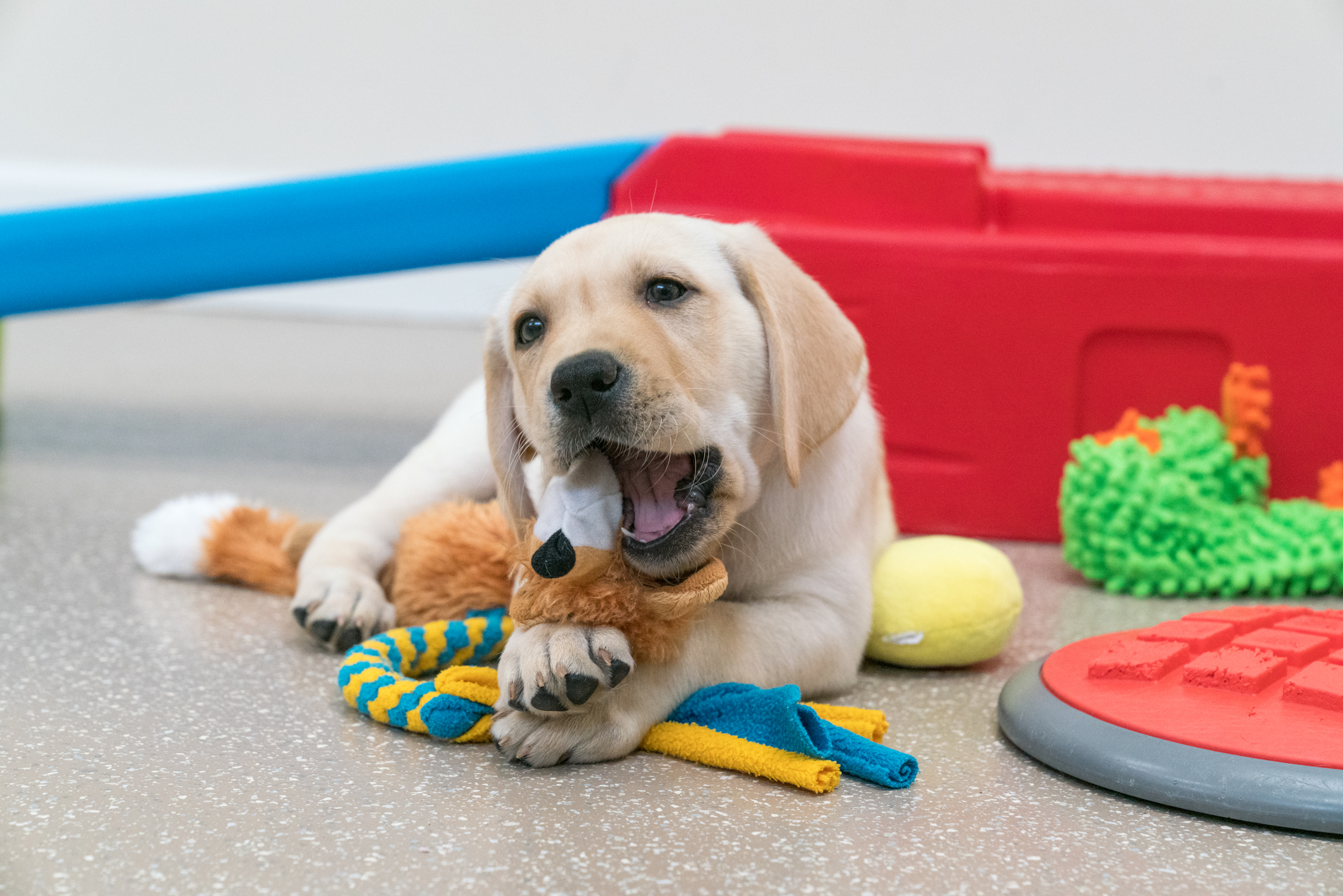
Puppy Training That Actually Works
When our puppies-in-training go out in public, people are often surprised at how well they behave. They obey cues very well! Of course, the older the puppy, the better behaved it will be. In human terms, a new puppy is in the toddler and terrible twos stage as compared to pre-teens, for example. (Unwanted behavior slowly fades as the young dog becomes older—mostly!). Our puppies-in-training are between 10 weeks and about 16 months old, the average age they return to campus for formal training.
Commands or Cues? The Correct Term to Use
At Southeastern Guide Dogs Inc, we practice positive reinforcement training at every stage of the process, from young pups to experienced guide and service dogs in the field. While most dog owners use the word “command,” our expert dog trainers use the term “cue” to describe the action we’d like a dog to perform. Why? Because to be an effective guide or service dog, the dog needs to think for itself the best way to perform that action.
Here’s an example. A person with a guide dog approaches a busy intersection. Their guide dog stops, as trained. While the handler, listening carefully for traffic, believes it is safe to cross and tells their guide dog to move forward, the dog itself needs to assess the situation very carefully. If the dog believes it’s not safe to cross, they will not move forward. A command demands immediate action. A cue communicates a desired action but allows the dog to determine whether it’s safe to perform it.
Professional working dog trainers have embraced this terminology change, and it is now standard within the training industry. It’s a key part of our dog training philosophy because we continually work to instill respect for the dog at every stage of the training process—even for puppies. Using basic cues instead of basic commands helps remind everyone involved of one fundamental truth: while the human dog handler directs, the working dog leads—and only when it’s safe to proceed.
Basic Training for Puppies
The cues our older dogs learn depend on whether the dog is being trained as a guide dog or a service dog. But our younger puppies start out learning basic obedience cues, including the 13 listed below. As volunteers in our puppy raising program, puppy raisers learn how to teach these skills and at what age to teach them, and then practice them at home, on outings, and at puppy raiser meetings. We must say, our dogs are pretty smart pups!
Here are the 13 cues our puppies learn and the approximate ages they learn them:
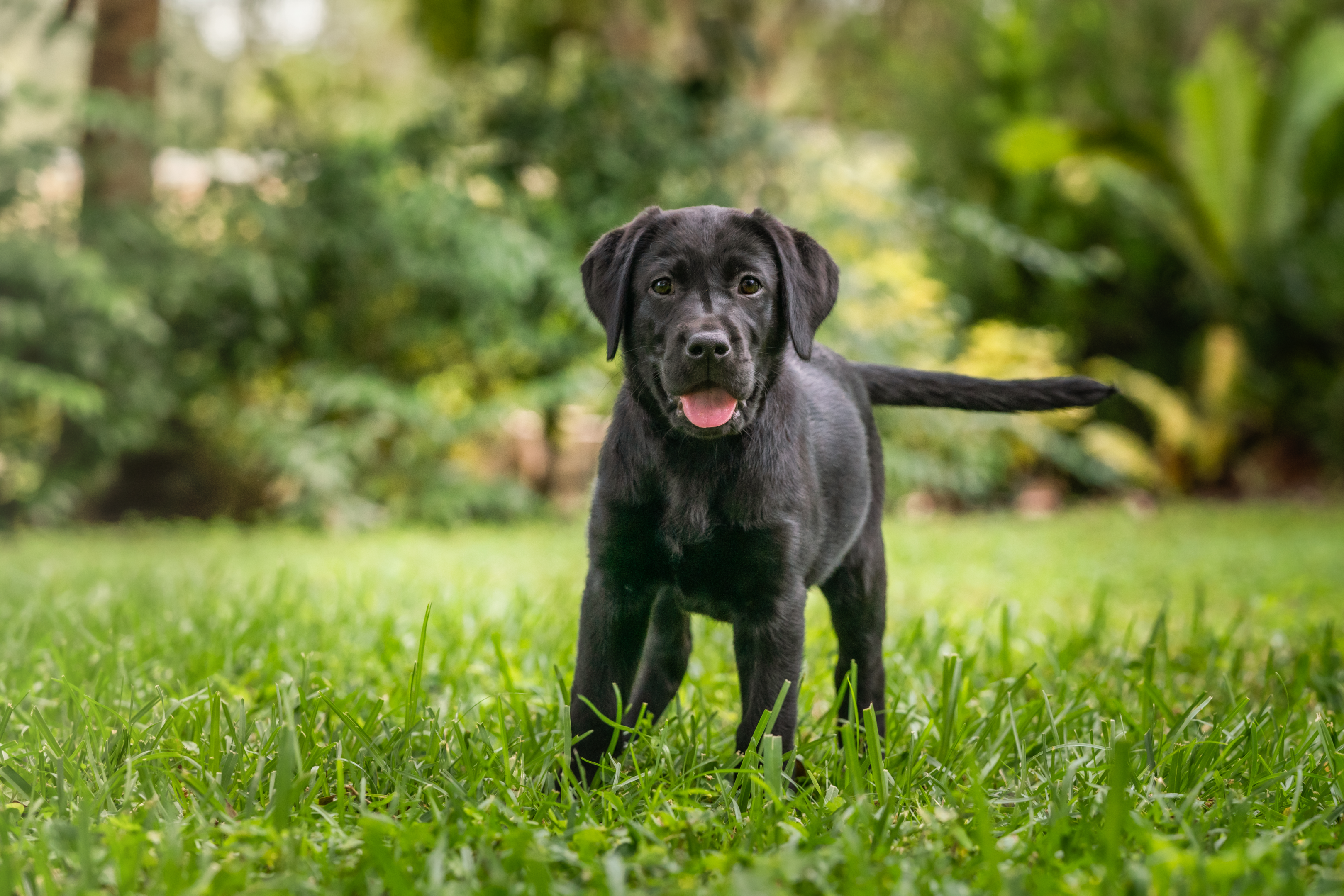
Early House Training
- Busy Busy – key to effective potty training, this cue teaches the puppy to relieve on command
3 – 6 Months
- Come – taught on leash; perhaps the single most important command puppy will learn
- Down – puts the dog in a relaxed and resting position
- Drop It – teaches the dog to release whatever is in its mouth
- Harness On – teaches the puppy to have a positive relationship with its coat in preparation for a future harness
- Heel – defined as the dog standing or seated at the handler’s left side
- Sit – one of the most basic obedience commands that helps puppy to refocus
- Stand – a calm, stationary position that lets puppy know it is “on duty” and to wait for further instruction
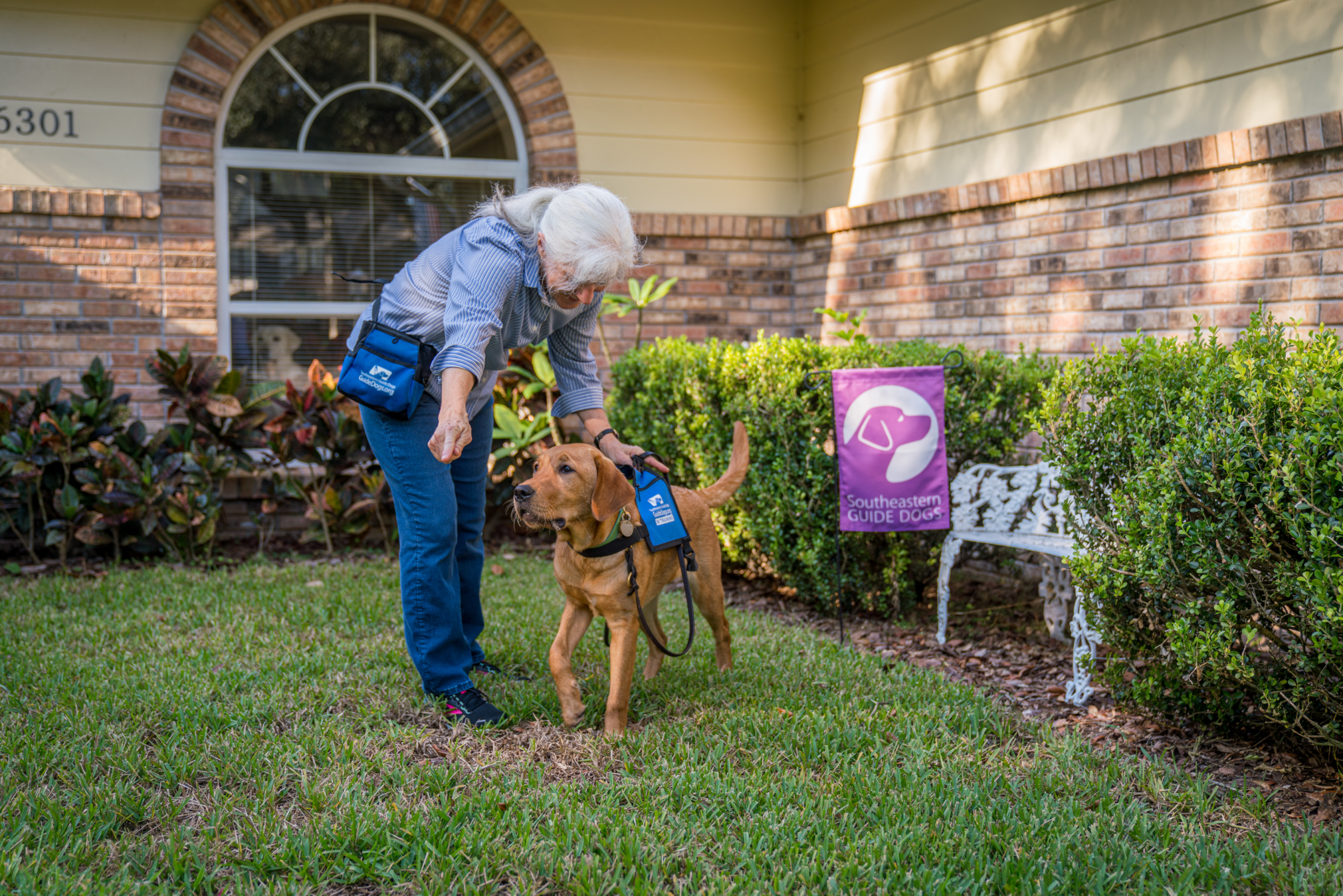
6 – 9 Months
- Close – teaches pup to sit close between the knees in preparation for the Down/Under command; useful for crowded places such as public transportation
- Place – used to direct the pup to lie down on a mat or bed, keeping puppy from being underfoot; useful at work or classroom
- Stay – taught in increasing measures of the three Ds: distance, distraction, and duration
- Switch – teaches puppy to switch sides before a closed doorway to prevent a door from hitting the dog as it closes
9+ Months
- Down/Under – used at chairs or benches to tuck the dog under and keep him out of the way
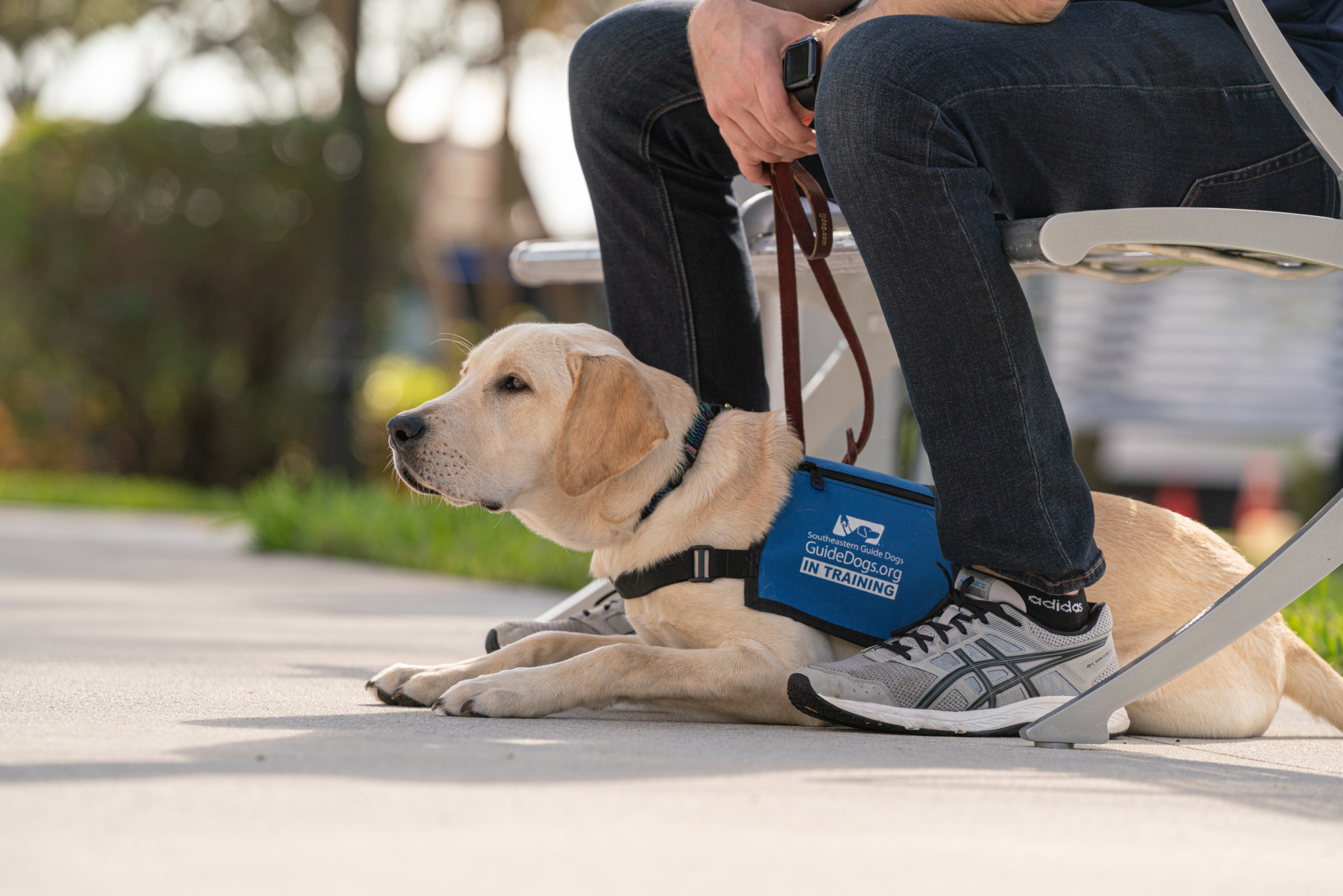
How long should a puppy training session take?
When it comes to effective puppy training, it’s often not a question of ‘how long’ should a puppy training session be, so much as ‘how often’ you should have them. It’s easy to overdo it with young puppies as their attention spans are so short, and they tire out surprisingly fast.
Interested in training your puppy and squashing all those bad behaviors and bad habits? The best approach is start training with two sessions daily: a few minutes for super-young pups, and no more than 10 minutes for older ones. You can gradually increase the time if your puppy learns quickly.
After puppy training sessions, give the puppy a break with appropriate chew toys or a quick nap. The most important tip? Train a puppy with consistency. Perfect practice makes for a more perfect pup.
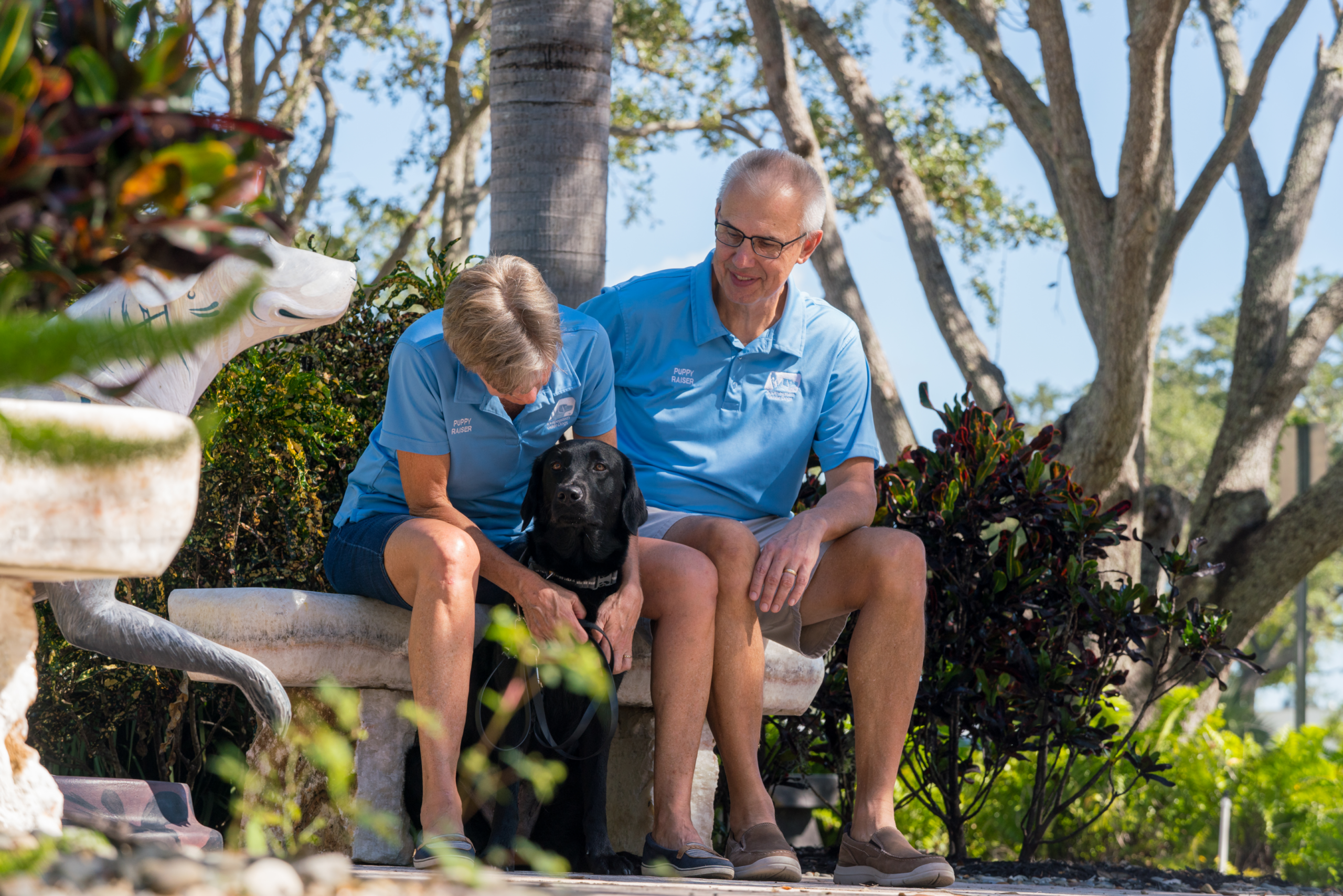
Advanced Puppy Training—What’s Next?
Once older puppies return for formal training, they learn additional skills directly related to a career as guide and service dogs. Meanwhile, many dogs will be chosen to serve as breeders, facility therapy dogs in military facilities, service dogs for veterans, skilled companion dogs for Gold Star families, and other meaningful careers. Regardless of where they work or play, their future handlers are thrilled to live with, rely on, and love such intelligent, well-trained, well-behaved pups.
Training tips for puppies
Any puppy owners out there wondering what to teach your puppy? You may not be a certified dog trainer, but you can certainly start to train your puppy using these basic puppy training cues. Check out our YouTube playlist of training videos here for your own virtual training class, and soon you’ll feel like a dog training expert. Basic puppy training and teaching new puppies good behavior doesn’t have to be overly complicated.
Dog ownership and pet parenthood can be tough, especially with a new puppy and all its behavioral issues. Sometimes you need a little help! Not only will these cues teach your puppy how to interact with small kids, other dogs, your other pets, and even other animals, these can be an invaluable tool to get your pup on your same page and on the road to good behavior. These puppy training tips videos are great for crate training, potty training, house training, and leash training, too. The best puppy training techniques involve positive reinforcement, so be sure to have lots of puppy treats on hand!
Become a Puppy Raiser Today
How do our pups grow to become extraordinary guide, service, and skilled companion dogs? It all starts with people just like you. And all it takes is love. Click here to learn more.
Learn More about Raising a Puppy

Learn More About Southeastern Guide Dogs Inc
Want to learn more about our mission—or even tour our campus? Discover how our guide dogs, service dogs, and skilled companion dogs bring hope to those facing significant challenges.
You Might Also Be Interested In:

